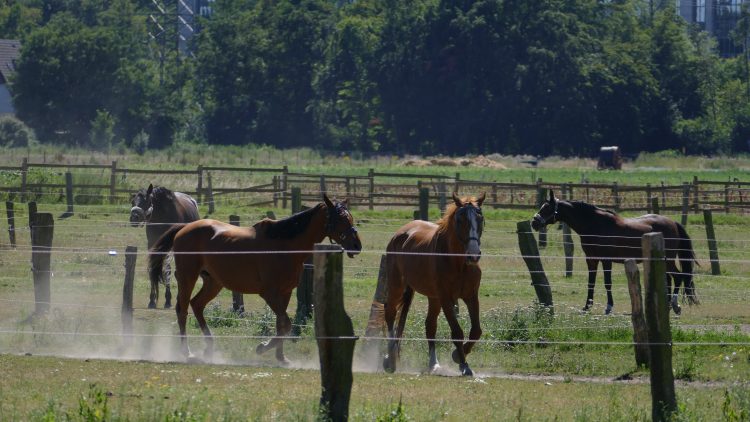Beginner’s Guide to Horse Farming: Getting Started
Beginner’s Guide to Horse Farming: Getting Started
Horse farming, also known as equine farming or horse ranching, is a rewarding yet complex endeavor that requires careful planning, investment, and knowledge. Whether you’re interested in breeding, training, boarding, or simply keeping horses for personal enjoyment, setting up a horse farm demands significant preparation.
This guide will walk you through the essential steps of starting a horse farm, from selecting the right land and designing facilities to feeding, health care, and business opportunities.
- Understanding the Purpose of Your Horse Farm
Before setting up a horse farm, it’s important to define your goals. The type of farm you establish will determine your facilities, management strategies, and financial expectations.
Common Types of Horse Farms:
- Breeding Farms: Focus on raising and selling foals from high-quality bloodlines.
- Boarding Stables: Offer services for horse owners who need a place to house their horses.
- Training Facilities: Specialize in breaking and training horses for riding, racing, or work.
- Riding Schools: Provide lessons and equestrian education.
- Therapeutic Riding Centers: Use horses for therapy and rehabilitation programs.
- Ranch and Workhorse Farms: Breed and train horses for agricultural or cattle work.
Each type of horse farm has specific needs and requires different levels of expertise and investment.
- Selecting the Right Land for Your Horse Farm
Horses require ample space for grazing, exercise, and shelter. Choosing the right location is crucial to their well-being and farm efficiency.
Key Considerations When Choosing Land:
- Size: A general rule is to have at least 1.5 to 2 acres of pasture per horse.
- Soil Quality: Good drainage and nutrient-rich soil support healthy pasture growth.
- Climate and Weather Conditions: Consider how extreme weather affects horse health and farm operations.
- Accessibility: Ensure good road access for veterinarians, feed deliveries, and transportation.
- Water Availability: Horses need clean, fresh water daily; ensure a reliable water source.
A well-planned layout will minimize maintenance costs and provide a safe environment for horses.
- Building Essential Horse Farm Facilities
A well-designed horse farm provides comfort and security for horses while being efficient for caretakers.
Key Structures on a Horse Farm:
- Barns and Stables: Provide shelter, stalls, and storage for equipment. Stalls should be at least 12×12 feet per horse.
- Fencing: Safe fencing is crucial; avoid barbed wire, as it can injure horses. Wooden, electric, or vinyl fencing is recommended.
- Pastures and Paddocks: Rotational grazing prevents overgrazing and maintains pasture quality.
- Riding Arenas: Essential for training and exercise. Can be indoor or outdoor.
- Shelters: Horses need run-in shelters in pastures for protection from weather conditions.
- Water Systems: Install automatic waterers or ensure easy access to clean water troughs.
- Tack Room: Store saddles, bridles, grooming tools, and other equipment securely.
Proper planning of these facilities ensures the safety and well-being of both horses and handlers.
- Choosing the Right Horses for Your Farm
Selecting the right horses depends on your farm’s purpose. Consider temperament, breed, age, and training level.
Popular Horse Breeds for Farming:
- Quarter Horse: Versatile and popular for ranch work and riding schools.
- Thoroughbred: Best suited for racing and competition.
- Arabian: Known for endurance riding and elegant show competitions.
- Clydesdale: A draft horse breed ideal for work farms.
- Friesian: Suitable for show riding and dressage.
Factors to Consider When Buying Horses:
- Health history and veterinary records.
- Current training level and temperament.
- Age and future usability.
- Compatibility with farm goals.
Always consult an experienced trainer or veterinarian when purchasing horses.
- Feeding and Nutrition for Horses
Proper nutrition is vital for maintaining healthy horses. Horses are grazing animals and require a balanced diet of forage, grains, and supplements.
Basic Horse Diet Components:
- Forage (Hay or Pasture Grass): Should make up at least 50-70% of a horse’s diet.
- Grains (Oats, Barley, Corn): Provide additional energy but should be fed in moderation.
- Vitamins and Minerals: Essential for bone strength, digestion, and overall health.
- Salt and Electrolytes: Help maintain hydration, especially in hot weather.
- Fresh Water: Horses need 10-15 gallons of clean water per day.
Common Feeding Mistakes to Avoid:
- Overfeeding grain, leading to obesity and digestive issues.
- Poor-quality hay causing colic or respiratory problems.
- Irregular feeding schedules causing stress in horses.
Consult a livestock nutritionist for personalized feeding plans.
- Horse Health and Veterinary Care
Maintaining a strong health care program is essential to prevent diseases and ensure longevity.
Routine Horse Health Care Includes:
- Vaccinations: Protect against diseases like tetanus, rabies, and equine influenza.
- Deworming: Regular parasite control prevents weight loss and digestive issues.
- Hoof Care: Farriers should trim hooves every 6-8 weeks to prevent lameness.
- Dental Care: Teeth should be checked annually for sharp edges or alignment issues.
- Emergency Preparedness: Keep a first-aid kit with bandages, antiseptics, and pain relievers.
Regular veterinary check-ups help detect and treat health issues early.
- Managing Daily Horse Care and Farm Maintenance
Successful horse farming requires consistent care and farm upkeep.
Daily Tasks:
- Feeding and watering horses.
- Cleaning stalls and replenishing bedding.
- Checking fences and gates for safety.
- Grooming and health inspections.
Weekly and Monthly Tasks:
- Rotating pastures to prevent overgrazing.
- Scheduling veterinary and farrier visits.
- Inspecting barns, stalls, and equipment for repairs.
Staying organized with a farm management system or calendar helps keep operations running smoothly.
- Legal Considerations and Farm Insurance
Owning a horse farm involves several legal and financial responsibilities.
Key Legal Considerations:
- Zoning Laws: Ensure your property is zoned for agricultural or equine use.
- Liability Protection: Horse-related injuries can result in legal claims; consider liability waivers.
- Business Licensing: If offering boarding or training services, register your farm as a business.
- Environmental Regulations: Comply with manure disposal and pasture management laws.
Farm Insurance Options:
- Equine liability insurance.
- Mortality and medical insurance for horses.
- Property and equipment insurance.
Consult with an equine lawyer or insurance agent for proper coverage.
- Financial Planning and Profitability in Horse Farming
Horse farming can be a costly venture, so financial planning is crucial.
Common Revenue Streams:
- Breeding and selling horses.
- Offering boarding services.
- Conducting riding lessons and training programs.
- Hosting equestrian events and competitions.
- Selling horse-related products (feed, tack, apparel).
Managing Costs:
- Invest in quality equipment to reduce maintenance expenses.
- Buy feed in bulk to save money.
- Perform routine maintenance to avoid costly repairs.
Conclusion: Starting Your Horse Farm Successfully
Starting a horse farm is an exciting but challenging journey. It requires proper planning, investment, and a deep understanding of horse care.
By choosing the right land, building necessary facilities, selecting appropriate horses, and implementing best management practices, you can create a successful and sustainable equine business.
Whether you’re raising horses for pleasure, competition, or business, continuous learning and adaptability will ensure long-term success in horse farming.
Previous Article
Horse farming
April 5, 2025



























































